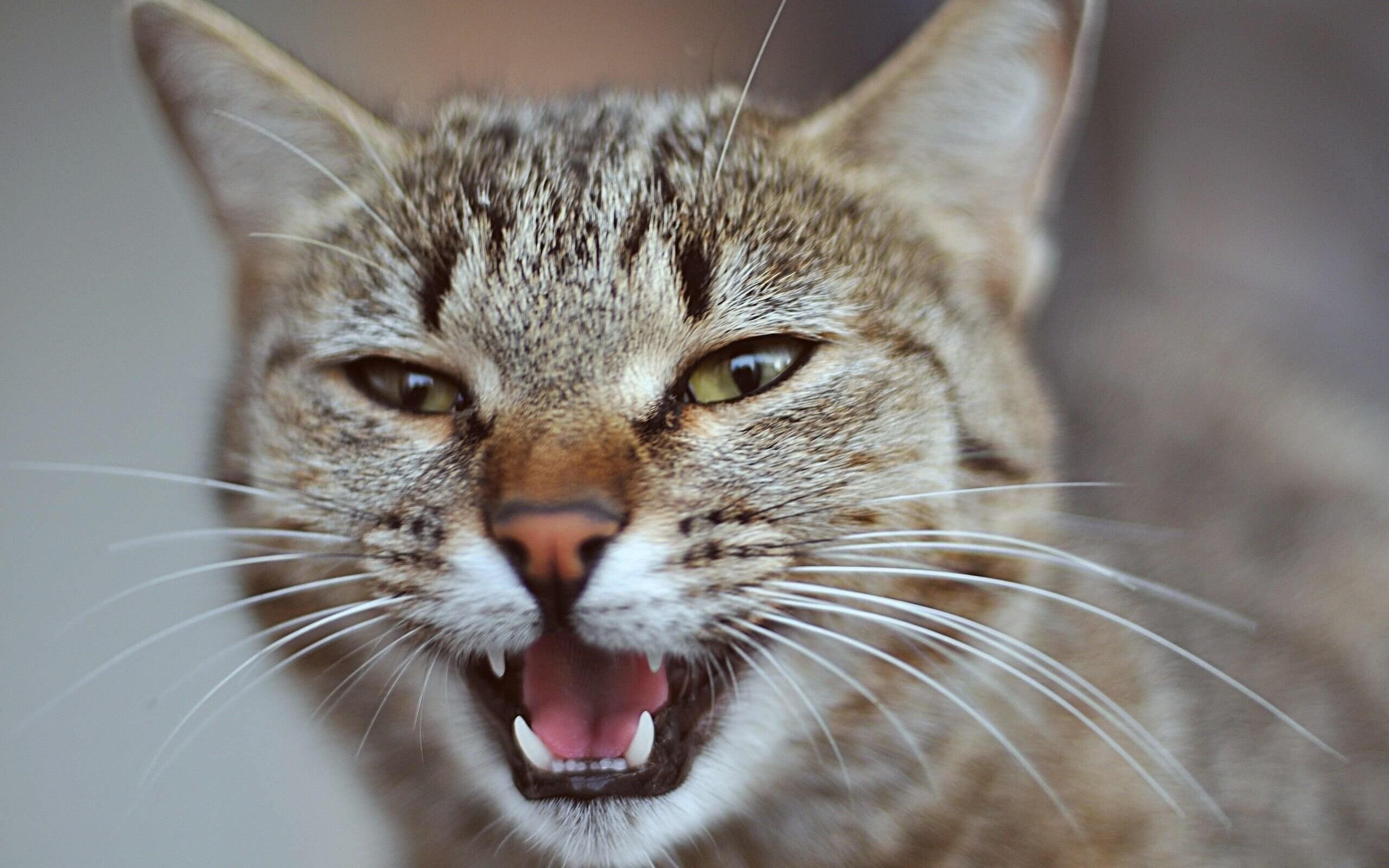While tooth decay is not an issue in cats, many cats have another problem chewing on. We are talking about tartar. Why is the buildup on teeth problematic and what can you do about tartar build-up in cats? We put the problem to the test!
Symptoms: How to Spot Tartar in Cats

Oftentimes, the vet will alert cat owners to the buildup. Because looking into the mouth is part of the basic examination. But you can recognize tartar yourself: the teeth show yellowish or brownish discoloration. Many velvet paws develop an unpleasant bad breath. If the tartar has progressed further, the gums become reddish and inflamed. Many cats start to salivate uncontrollably or eat less than before because it hurts them to chew. It is important that you interpret these symptoms correctly and initiate the appropriate treatment steps.
The Cat Has Tartar – What to Do?
Basically, if you recognize tartar symptoms in your cat, you should take her to the vet.
How to remove tartar in cats yourself?
You can specifically counteract plaque – have a look at our tips on prevention below. If the tartar is already there, however, it is usually too late. There are numerous tips circulating on the Internet, but a cat with tartar is an expert! Some feed supplements offer the prospect of removing tartar. But this usually sticks too tightly to the teeth for this to be promising. In a few cases, the vet can manually remove the tartar from the affected teeth without anesthesia. This requires a very cooperative velvet paw and is not possible with every surface.
Professional teeth cleaning at the vet
The vet puts the cat under anesthesia for professional teeth cleaning. So he can clean all of his teeth. He uses an ultrasound device to break up the tartar. The treatment often involves pulling on purulent teeth, which cause pain for the cat. It is often only after the tartar has been removed that the vet realizes the damage to the underlying teeth.
After cleaning, the vet will polish the teeth so that they are less susceptible to plaque clinging to them. The veterinarian’s costs for professional teeth cleaning depend on the condition of the teeth and the time required. The following applies here: the earlier you clean your teeth, the cheaper it is.
Special case: tartar & old cats
In the case of seniors or chronically ill cats, the risk of anesthesia must be weighed against the tartar problems. Keep in mind, however, that older cats in particular benefit from tooth cleaning and possibly the removal of painful teeth.
As in humans, inflammation in the gums can cause heart problems or make diabetes and kidney disease more likely.
Some veterinary practices that focus on dentistry have special appointments for seniors. Because not all anesthesia is the same and not every practice offers the optimal anesthetic procedure. If you find yourself in such a conflict, turn to a specialist.
Preventing Tartar: Dental Care in Cats
The Best Tartar Treatment? Don’t let it arise in the first place! We give tips. But remember: tartar is subject to genetic influences and cannot be prevented in every case.
Food for healthy teeth
Cleaning your teeth while chewing – sounds like the perfect solution. Some manufacturers offer dry food that is supposed to prevent tartar build-up. However, the kibble consists mainly of starch, which in turn leads to plaque. So miracles are not to be expected here. Cat owners who feed their four-legged friends with raw meat, i.e. baref, swear by their method. Because chewing on the solid pieces of meat cleans the teeth. Our recommendation: Make sure you eat high-quality food without inferior carbohydrates. In between, serve tasty bites that counteract tartar. For example, give your velvet paw a piece of raw beef every now and then. If she likes small buffalo skin bones – these can be found in the dog section – let her chew on them. An alternative is catnip sticks made of wood, but not every fur nose finds them attractive.
Brush your teeth against plaque
The plaque comes in front of the tartar. This is a greasy deposit of leftover food, saliva, and bacteria that gradually solidifies into tartar. As with humans, brushing your teeth every day can remove plaque. Specialized animal toothbrushes are available from specialist pet shops – for example, to put on your fingers – including toothpaste. However, if you have an adult cat at home that already expands its claws when opening its mouth, it will be difficult. It is therefore important that your cat is already used to brushing its teeth.
You can get kittens used to brushing their teeth playfully and with some patience. It is best to brush your teeth every other day.
Because after two to three days plaque solidifies into tartar. Alternatively, there are food supplements that you can add to the water or with the food.
Preventing tartar with homeopathy
Homeopathy is controversial, but some cat owners report successful tartar prevention with homeopathic remedies. The best thing to do is to ask an experienced animal healer, who can put the remedies together individually for your velvet paw. Homeopathic wild strawberry extracts are even said to help soften existing tartar. However, there may be other problems hidden under the tartar or the cat may have a toothache. That is why you should only use homeopathic remedies after consulting your veterinarian.

